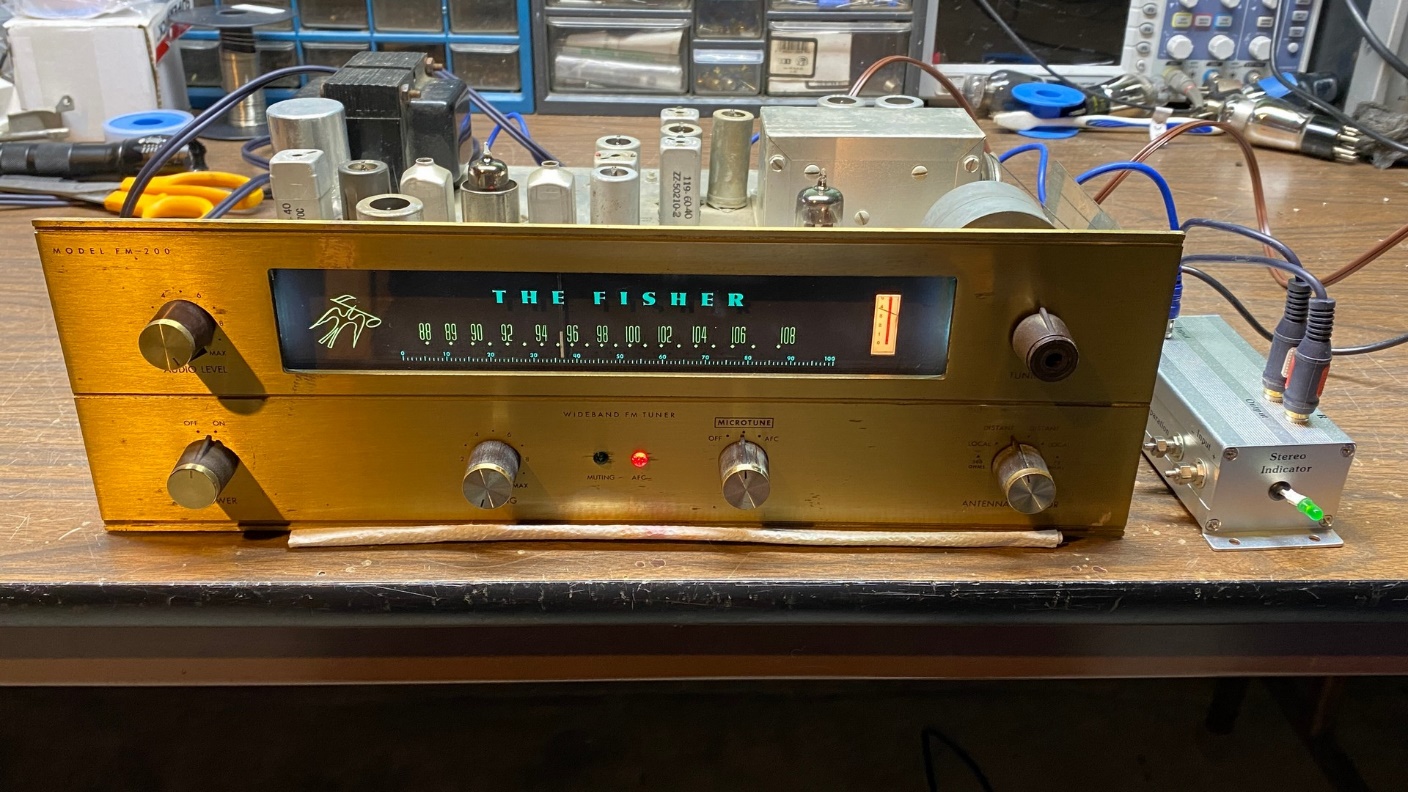
Having restored my recently acquired Fisher FM-200 (shown above) to mostly proper operation (the Muting circuit still does not work but everything else works as it should), I happened to remember a little something I had purchased from eBay two or three years ago.
Back then someone was selling an FM multiplex decoder, completely wired up and installed in an aluminum case, for around $25. I bought one and tried using it with my Fisher TA-600 receiver and was very disappointed in its performance. So, it went up on a shelf where it remained until Christmas Day 2020, when I remembered it.
Recalling what I had to do to make a different solid state FM multiplex decoder work with my Fisher FM-100, I had removed the ceramic coupling capacitor in series with the FM multiplex output of my FM-200 and replaced it with a solid wire. I pulled the eBay-purchased decoder off the shelf and connected it to my FM-200.
I was pleasantly surprised to find that the decoder worked fine with my FM-200, and I was able to receive quite a few FM stations in Living Stereo. A picture of the FM-200 and the decoder is shown above.
Here is a close-up look at that decoder:
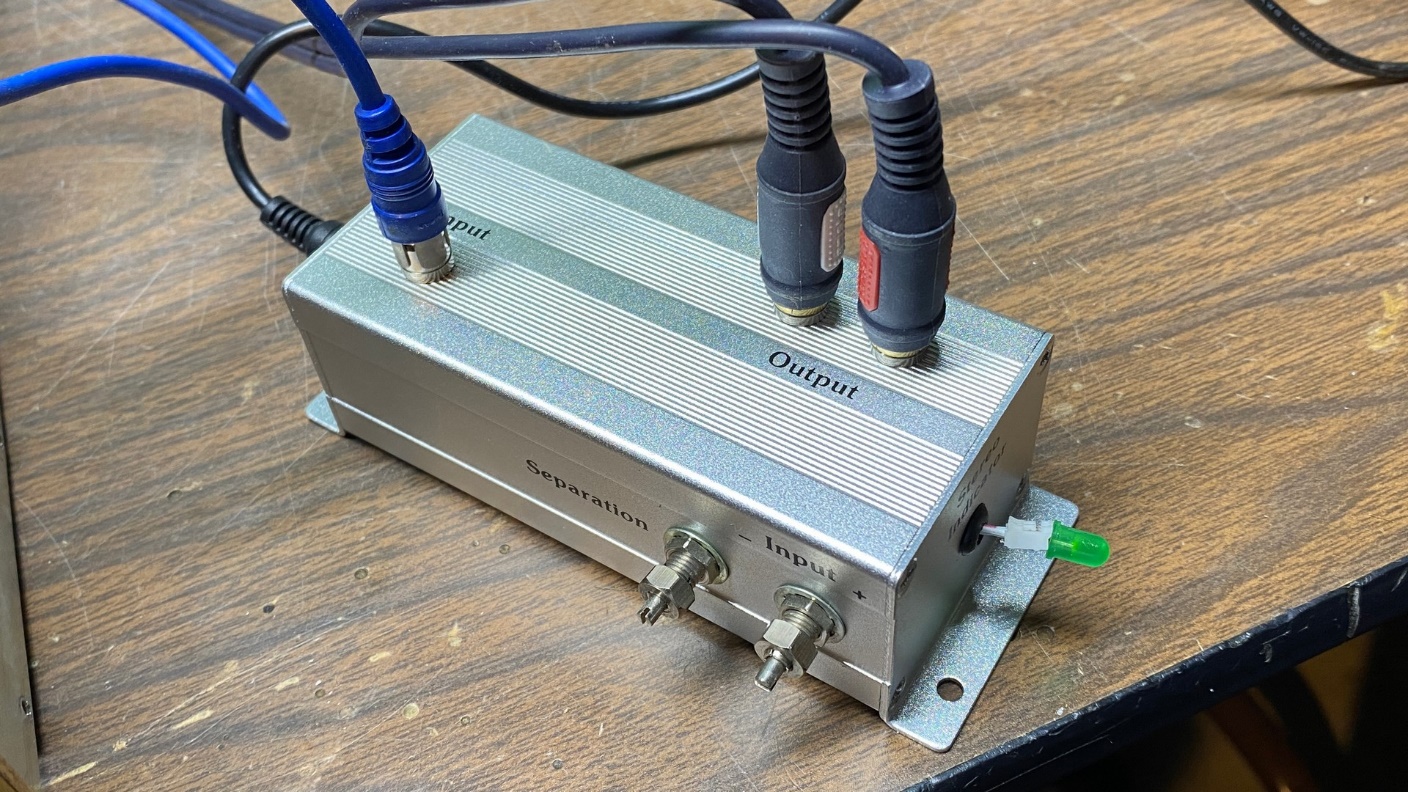
China-built FM multiplex decoder as sold on eBay a few years ago
The key to making a solid-state multiplex decoder work with a Fisher tube-type tuner is to eliminate that ceramic disc capacitor, typically .005 uF, from the output of the ratio detector to the multiplex output jack and replace that capacitor with a solid wire. The .005 uF capacitor greatly reduces the signal output and also cuts off lower audio frequencies.
Since this decoder was playing nicely with my FM-200, I decided to try modifying two other Fisher FM (mono) tuners I had. The first one I opened was my FM-50.
Looking under the chassis, the capacitor which needs to be replaced with a wire is shown below – a red arrow is pointing to it.

Unmodified Fisher FM-50 with .005 uF capacitor between ratio detector output and multiplex jack.
The following partial schematic diagram shows what needs to be done to the FM-50 to modify its multiplex output for use with a solid-state decoder.
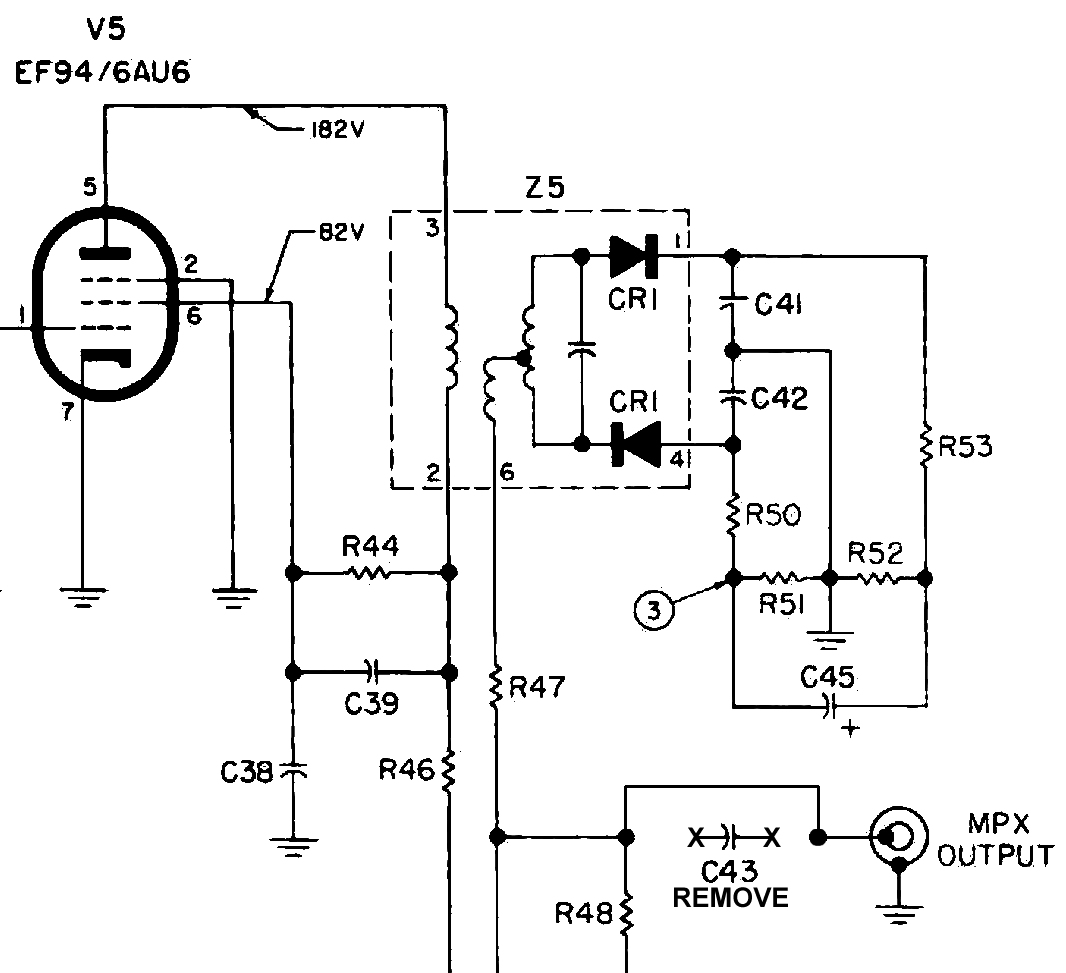
Partial schematic showing modification to the Fisher FM-50 tuner.
The modification is very simple – remove C43, .005 uF, and replace it with a wire. I used 22 gauge bus wire. You can see the result below.
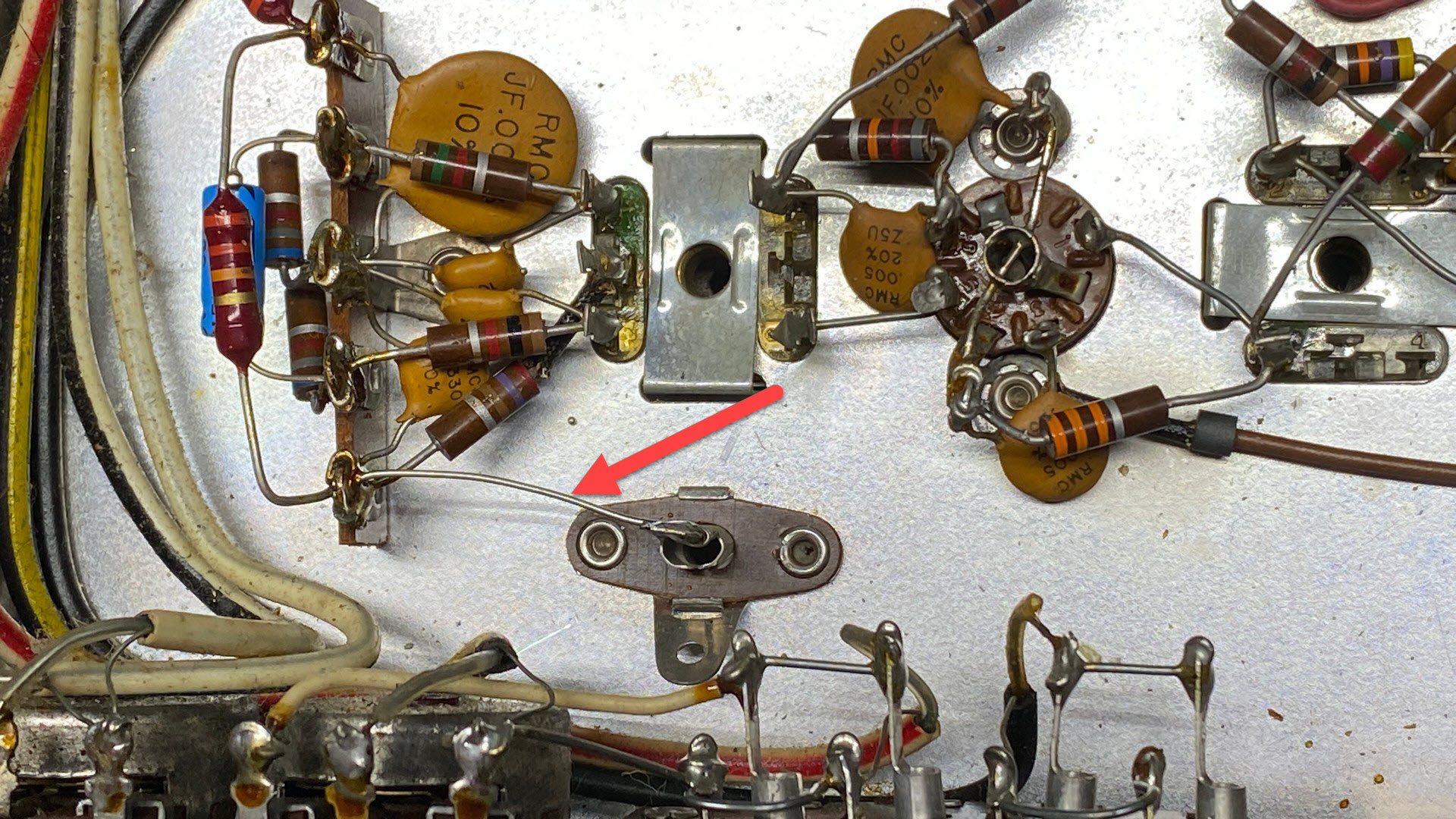
Coupling capacitor replaced with a wire in the FM-50.
After making this minor modification, I reattached the bottom cover to the tuner, turned it right side up, and connected the multiplex decoder to the FM-50’s multiplex output jack.
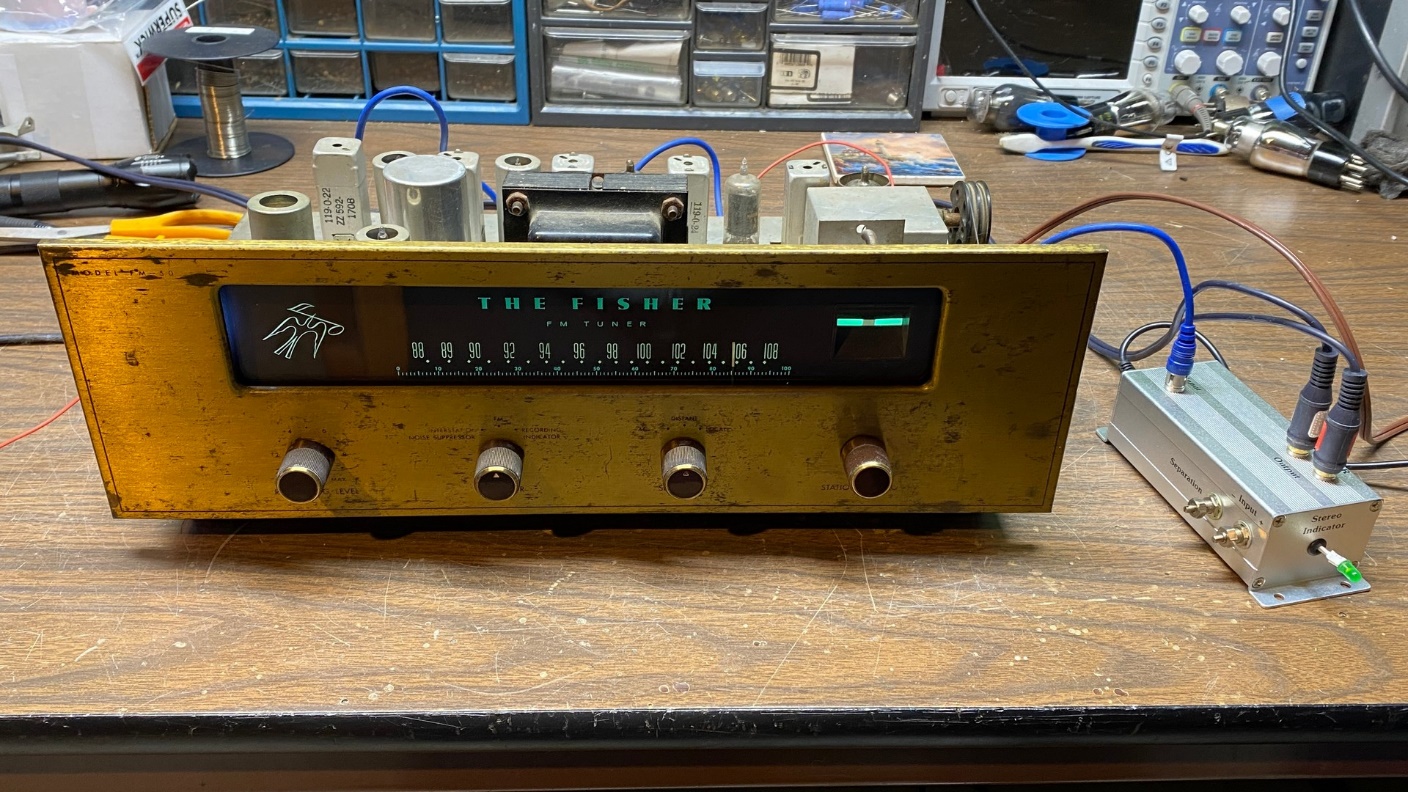
The Fisher FM-50 tuner with the solid-state multiplex decoder.
The result: The decoder worked almost as well with the FM-50 tuner as it had done with the FM-200. I did notice some distortion on some stations, which I had not noticed with the FM-200.
I then proceeded to make the same modification to my Fisher 101-R tuner. It used a .02 uF ceramic disc capacitor instead of a .005 uF unit, but the hookup (and modification) was the same. Results were the same as the FM-50 – some distortion was noticed on some stations, while others were OK.
There is one drawback to using this particular decoder – it forces the tuner into stereo mode all of the time. If a station happens to be broadcasting in mono (and I did notice a couple as I scanned the FM band), the decoder does not go into stereo mode (nor should it). But when a station is broadcasting in stereo, even if very weak, the decoder goes into stereo mode and if the signal is weak, hiss can be heard which can be quite annoying if the signal is very weak.
Still, I felt this was an interesting experiment in using a solid-state multiplex decoder with Fisher mono tuners. And I was also happy to discover that my $25 or so was not wasted after all.